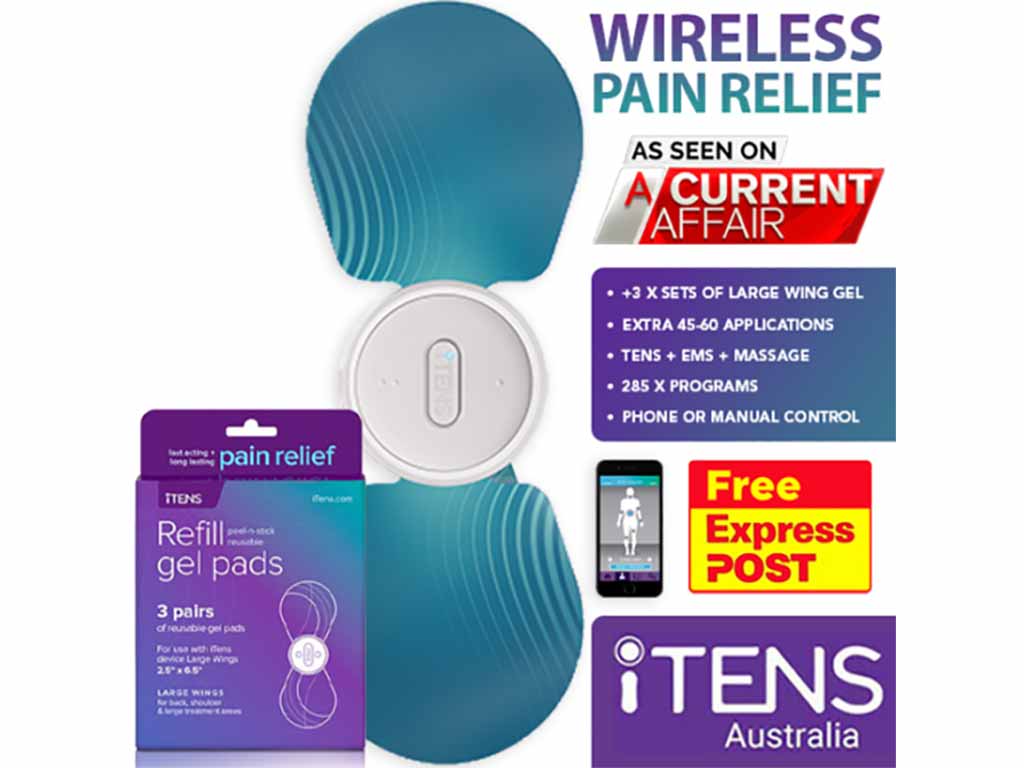
Transcutaneous Electrical Nerve Stimulation (TENS) is a widely recognised form of stimulation and method of pain relief. It leverages a small, electronic device that delivers electrical currents to the body. Accordingly, the mechanisms of action for pain relief TENS involve two primary theories. It includes the Gate Control Theory of Pain and the Endorphins Release Theory. Nevertheless, this form of pain relief can treat various types of pain. It can manage acute pain and chronic pain conditions.
Painful conditions affect millions of people worldwide. It decreases the quality of life and limits daily activities. Traditional pain management approach often involves pain control medications that may come with side effects or risks of dependency. As a result, many individuals are turning to other methods of pain relief. One promising solution that is gaining popularity is TENS therapy. This article will present TENS for pain relief, including its mechanisms of action and the treatable types of pain.
What is Pain Relief TENS?
Pain relief TENS is a therapeutic technique that employs an electrical device that emits low-voltage electrical impulses. It streams the pulses via electrode patches attached to the skin. Accordingly, healthcare professionals and physical therapists often recommend this method for pain management. Individuals can also purchase a TENS unit for home use.
TENS devices come in both wired and wireless models. It offers flexibility and convenience to users depending on their preferences and lifestyles. Wired TENS units are connected directly to the electrode pads via physical wires. Meanwhile, wireless versions allow for more freedom of movement. They do not require a direct connection to the control unit. Users can connect them to a smartphone via Bluetooth.
Furthermore, there are several benefits of using a TENS unit. It is non-invasive and drug-free. Thus, it does not require surgery, breaking the skin, or taking medications, making it a safe and effective analgesia. Subsequently, TENS therapy is customisable. It allows individuals to adjust the pulse rate, the intensity of stimulation, and pulse duration. Additionally, TENS can be an adjunct treatment.
Brief History of TENS
- Early Foundations: The concept of using electricity for pain relief dates back to ancient times when it was reported that pain was relieved by standing on an electric fish.
- 19th Century: Various devices were invented that utilised electrical currents for medical treatments. It lays the groundwork for modern electrotherapy.
- Mid-20th Century: Researchers and scientists introduced the Gate Control Theory of Pain.
- Commercialisation and Adaptation: TENS units were available on the market and were being used by healthcare providers in the 1970s.
- Since its commercial introduction, TENS technology has evolved significantly. Modern devices are more user-friendly, portable, and feature-rich.

Mechanisms of Action Behind Pain Relief TENS
Foremost, pain relief TENS aids in the release of endorphins. Endorphins are the natural painkillers of the body. These biochemicals have the power to alleviate pain intensity through their opioid-like analgesic effects. Nevertheless, the electrical pulses from the unit trigger the production of endorphins. As the levels of endorphins increase, they bind to opioid receptors, fostering a sense of well-being.
The pain gate mechanism is another critical aspect of how TENS works. It posits that the nervous system contains a neurological “gate” in the spinal cord. It controls the transmission of pain messages to the brain. The electric currents can stimulate non-painful fibres. They travel faster than pain signals. As a result, it effectively “closes the gate”, preventing pain messages from reaching the brain.
Lastly, the electrical stimulation contributes to improved blood flow. The electrical impulses encourage the dilation of blood vessels, which enhances circulation. Enhanced blood flow delivers increased oxygen and nutrients to the body tissues. It helps to remove waste products and promote healing. Additionally, this improvement in circulation can reduce inflammation, ease stiffness, and alleviate discomfort.
Low and High Frequencies
There are two primary frequency settings in TENS therapy: low and high. Low-frequency, often termed acupuncture-like TENS, typically operates at frequencies below 10 Hz. This setting stimulates the body to produce endorphins. It is a form of pain relief that can last for some time after the treatment session. The sensation feels like a gentle, rhythmic tapping.
On the other hand, high-frequency TENS runs above 50 Hz and is sometimes referred to as conventional TENS. This setting blocks pain signals from reaching the brain. During high-frequency TENS therapy, the sensation is more of a steady, buzzing vibration and is usually not painful.

Types of Pain Treated with Pain Relief TENS
Pain relief TENS is a versatile therapy for managing various pain types. Foremost, TENS therapy swiftly addresses acute pain conditions. They are often sudden and short-term, frequently resulting from injuries and surgeries. Accordingly, TENS offers a level of pain relief for chronic pain conditions. They are usually ongoing, long-term discomfort. It may include arthritis pain, fibromyalgia, and backaches.
Moreover, TENS treatment addresses neuropathic pain. It arises from damaged nerves and may cause burning sensations. It may involve diabetic neuropathy, sciatica, and nerve entrapment syndromes. TENS is also effective in treating musculoskeletal pain. It affects the bones, tendons, ligaments, and muscles. It may be due to knee joint pain, osteoarthritis pain, and rheumatoid arthritis.
In addition, TENS proves beneficial for muscular discomfort. It targets specific muscles that are in spasms or are strained. The electrical currents encourage muscle relaxation and increase blood flow to the area. TENS can be a practical part of a recovery regimen for athletes or those with physically demanding jobs. It reduces downtime and enhances performance.
Are There Potential Side Effects?
While TENS is safe, there are potential side effects that users should be aware of. Skin irritation in the electrode placement site is a common issue associated with TENS. To minimise this risk, keeping the skin clean before applying the electrode pads is essential.
Allergic reactions are another possible side effect. It occurs due to the materials used in the electrode patches. People with known allergies to adhesives should look for hypoallergenic options. Additionally, muscle twitching can occur when the electrical currents are set too high. While not harmful, it can be uncomfortable. Adjusting the settings can avoid this issue.
Conclusion
In conclusion, pain relief TENS offers a non-invasive and drug-free solution to managing discomfort. The history of TENS dates back to ancient times and has evolved significantly throughout the years. Nevertheless, TENS is a therapeutic tool that utilises an electronic device that dispatches electrical currents to the body. These pulses work behind various analgesic mechanisms. The currents can block the transmission of pain messages, prompt endorphin release, and contribute to improved blood flow.
Furthermore, there are two primary frequency settings in the TENS unit. It includes the low-frequency, acupuncture-like TENS (below 10 Hz) and high-frequency, conventional TENS (above 50 Hz). With such mechanisms and adjustable parameters of stimulation, TENS therapy can treat various types of pain. It can manage injuries, fibromyalgia, nerve entrapment syndromes, osteoarthritis pain, and muscle strain. However, recognising the potential side effects of TENS is crucial for safe and effective use.




















